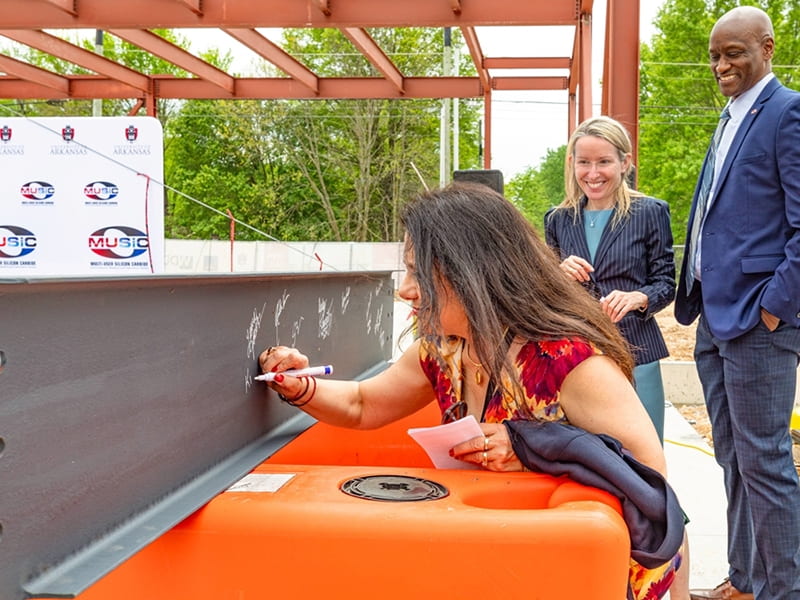Tiny but Mighty: Harvesting Limitless Power

Paul Thibado has found that source in graphene.
Graphene, a nano-material comprised of a single layer of carbon atoms, has been explored for a variety of uses in recent years, from water filtration to electronics and wearable technology. But Thibado is the first scientist to harness its potential to produce energy.
“This is the key to using the motion of 2D materials as a source of harvestable energy,” Thibado said.

Good Vibrations
Thibado used this discovery to create a patent-pending invention called the Vibration Energy Harvester. In the design for this device, a negatively charged sheet of graphene is suspended between two metal electrodes. When the graphene flips up, it induces a positive charge in the top electrode, and when it flips down, it charges the bottom one, creating an alternating current.
Powering the Internet of Things
Thibado explained that the Vibration Energy Harvester could be the perfect energy source for lifesaving technology and medical implants like pacemakers and insulin pumps, as well as power a growing number of physical objects that send and receive data over the internet, called the Internet of Things.
According to a report from Cisco Consulting Services and DHL Trend Research, the number of connected devices is expected to grow from 15 billion in 2015 to 50 billion by 2020. These devices could include wearable health monitors, home devices such as thermostats and lighting, street lights that gather information to optimize the flow of traffic, and warehouse equipment that monitors inventory.
Moving Toward Commercialization
“This is by far the most exciting project I’ve seen,” said Charles Woodson, who has worked in the energy and nanotechnology fields for more than five decades. Woodson is director of research and technology at NTS Innovations, a national technology company.
Woodson was on the lookout for promising new graphene technology when he found Thibado’s research through a Google search. He was immediately interested.
Woodson works at NTS’s Tulsa branch, less than 150 miles from the University of Arkansas. The company, which is headquartered in Peoria, Illinois, focuses on the commercialization of nanotechnology, the production of green energy, and other environmentally sustainable projects, all via 2D materials.
NTS Innovations licensed the patent for the Vibration Energy Harvester in January 2018 to further develop the technology with the goal of moving it into the marketplace.
Thibado anticipates that this collaboration will provide important educational experiences for students from physics, chemistry, engineering and other departments, as well as employment opportunities for U of A graduates. This project, which started as a microscopic ripple on a sheet of graphene, is now a multidisciplinary collaboration between academia and industry, and it could be the next big energy breakthrough.
U of A Research a Key Factor in Defense and Tech Company’s Decision to Move to Arkansas
As envisioned, the Xtremis laboratory will become a unique national resource that elevates both Arkansas and the U.S. to the forefront of spectrum-related applied research for civilian and military applications.

Semiconductor Research and Fabrication Facility Celebrates Topping Out
The new facility will produce microelectronic chips made with silicon carbide, a powerful semiconductor that outperforms basic silicon in several critical ways, and allow testing of industry prototypes.

‘Stop Sign’ Disclosures on Ultra-Processed Food Have Positive Effect
Marketing researcher found that “stop sign” warnings on ultra-processed food packaging can have a positive impact.
U of A Research a Key Factor in Defense and Tech Company’s Decision to Move to Arkansas
As envisioned, the Xtremis laboratory will become a unique national resource that elevates both Arkansas and the U.S. to the forefront of spectrum-related applied research for civilian and military applications.
